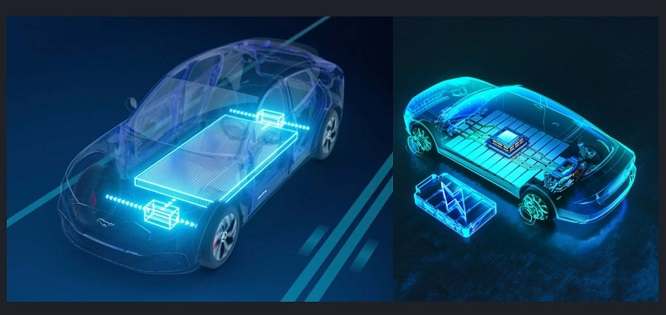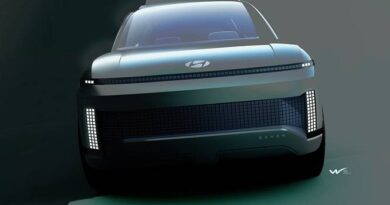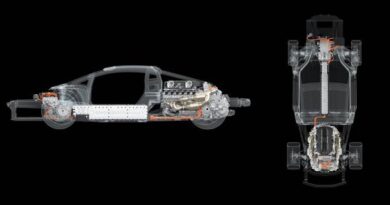What is the new battery technology for electric cars
What is the new battery technology for electric cars
The development of safe and effective systems of energy storage is the trump card for the electric revolution.
Today’s article will be about just that. We’ll talk about the Next Gen new battery technology for electric cars, some of which are about to commercialize for triggering mass market EV adoption.
When it comes to the use of today’s most widely used energy storage systems in transportation, several problems arise. Current lithium-ion batteries have relatively small energy density.
That means that if we want to increase the distance covered by a vehicle on a single charge, there will be a need to significantly increase the weight and volume of the battery, which will deteriorate the vehicle’s performance and comfort, let alone the price increase.

These are the main factors, for example, for electric airplanes being out of play currently.
Also, lithium-ion batteries face serious safety issues in the case of a hypothetical car crash because of flammable liquid electrolytes.
These issues are overcome by the development of new systems for energy storage, and one of the solutions can be the use of fluoride ion batteries.
Fluoride ion battery
The main working principle (new battery technology for electric cars) of fluoride-ion batteries is similar to that of lithium-ion batteries.
- Ions shuttle between the cathode and anode in processes of charge and discharge, but in this case, negatively charged fluoride ions are used instead of lithium ions.
- Teams of researchers from Kyoto University and Toyota Motor have created a prototype of this kind of battery that can overcome the disadvantages of lithium-ion batteries mentioned before.
- The first great advantage of this prototype is that the electrolyte is solid and inert, which means that this type of battery is less likely to catch fire in case of battery damage.
- The cathode in this battery consists of energy-dense copper, and the anode is composed of Lanthanum fluoride.
- These materials are characterized by much larger fluoride ion capacities and higher reversibility compared to lithium-ion batteries.
- Researchers claim that the use of this system will enable affordable mass electric vehicles with lightweight batteries to run about 620 miles or 1000 km on a single charge.
- The battery can offer about three times higher energy density, which brings the idea of electric airplanes to reality.
- Solid-state fluoride ion batteries are more than three times cheaper than lithium-ion batteries, offering a $30 price tag per kilowatt hour.
- The used electrode materials are subjected to fast degradation, which results in a shorter battery lifespan.
- That may be one of the disadvantages of this prototype, although researchers claim they have found the solution to this problem by using cobalt’s nickel-copper alloy.
- Another challenge is the high temperature required for the efficient functioning of its solid electrolyte.
In parallel, researchers around the world are competing to create better lithium-ion batteries with solid-state electrolytes, which will increase the safety of a battery cell.
The energy density compared to the current lithium-ion batteries with liquid electrolytes. But the solid-state fluoride ion new battery technology for electric cars can theoretically offer much better energy density.
Structural Battery
Diminishing the weight of a vehicle by replacing the rigid structural car elements with batteries would take care of two birds with 1 st transforming a battery pack into a load-bearing structure.
Such named structural new battery technology for electric cars have already been adopted by Tesla to produce, for example, the new lightweight version of Model Y.
An exceptional massless structural battery project is being developed by researchers at the Chalmers University of Technology, aiming to turn the body shell of a vehicle into a new battery technology for electric cars.
- The team that has already created several structural battery prototypes now wants to take the technology to the next level by depositing the active cathode material on carbon fiber instead of the currently used aluminum foil.
- The anode is also carbon fiber, and the separator is ultrathin fiberglass fabric. In this case, the inner parts of a battery, such as the current collectors and the separators, have load-bearing functions.
- The carbon fiber is as strong as aluminum but is much lighter, which allows for designing a structural battery with both rigidity and better energy storage capacity than the current best prototype.
- Despite still having a few times less energy density than the current oxide-based lithium-ion batteries, this technology will greatly reduce the weight of a vehicle by utilizing the chassis as a battery.
- That advancement allows thin, and even flexible structural batteries and the possible applications of these new multifunctional systems are limited by our imagination.
As the research leader says, the next-generation structural new battery technology for electric cars has fantastic potential.
The biggest challenge of the structural battery will be flammability since it uses organic electrolytes like common batteries.
The development of solid-state electrolytes would bolster the commercialization of structural batteries (new battery technology for electric cars).
Besides, there is a potential to extend the range of an aerial vehicle by over 50% when displacing the wing panels with structural energy-storing elements.
That will significantly reduce the Glamorous requirements for the gravy metric capacity of electric aviation new battery technology for electric cars.
Bodyshell as Energy Storage
Another massless energy storage project (new battery technology for electric cars) has been introduced a collaboration between Lamborghini and MIT.
- The ultimate goal of the team is to turn the next-gen concept car, dubbed Turzo Millennial, into an accumulator for energy storage.
- The technology can allow for monitoring the car’s carbon fiber structure if tiny cracks should appear.
For example, due to a minor impact or just simple material fatigue, the charge can traverse through the car’s body and kickstart a self-repairing process to prevent the cracks from growing.
That will be a huge support in bringing the latest valuable information about the Next Gen new battery technology for electric cars recent appetites for the transition from ice-powered vehicles to EVs challenge the lithium-ion battery industry with the production of an enormous amount of battery cells.
But lithium reserves are mainly concentrated in a few countries, and accelerating battery-grade lithium production is remarkably time intensive.
That makes companies delay some of their EV projects due to battery cell supply constraints.
Sodium-ion battery
The biggest lithium-ion battery manufacturer in the world, CATL, has announced the production of a sodium-ion battery in 2023.
- The working principle of the sodium-ion battery is similar to the lithium-ion battery, but here the charge is stored by sodium ions, which are much more abundant on Earth and are widely distributed all over the world, unlike lithium.
- Besides, due to the different properties between sodium and lithium, the Cathode materials of the sodium ion battery should be a bit different.
- So CATL uses a cheap Prussian white instead of lithium oxides or phosphates. In the case of an anode, the company uses a hard carbon material which is similar to the carbon-based graphite anode in a lithium-ion battery.
- Graphite has almost reached its theoretical capacity and further improvement can be done by the addition of silicon or silicon oxide.
- For hard carbon, the theoretical capacity depends on many more factors due to a different storage mechanism, and it can be higher than for graphite in lithium-ion batteries.
What does the CATL sodium ion battery offer?
Based on a series of unique material properties, it has the advantage of fast charging performance.
So the battery can regain 80% charge in 15 minutes at room temperature. Moreover, it offers a capacity retention rate of more than 90% in a low-temperature environment of -20 degrees celsius while challenging many contemporary lithium-ion batteries.
In these regards, it has a major drawback of low energy density as compared to oxide-based lithium-ion batteries.
Currently, CATL’s first generation of sodium-ion batteries can achieve a capacity of 160 watt-hours per kilogram, similar to lithium-ion phosphate batteries.
At the same time, the high interest in sodium-ion batteries stimulates an active search for new electrode materials with superior properties.
For example, recently discovered vanadium Pyrophosphate is a promising candidate because characterized by high thermal stability, which not only solves safety issues but also helps get rid of an advanced thermal regulation system that generally takes additional volume and impacts.
EV range besides vanadium Pyrophosphate may serve as both Cathode and anode material which will further enhance safety and provide long battery life while keeping a similar high voltage.
We should not forget about lithium-ion batteries so quickly, since they’ve already shown themselves in portable equipment and electric vehicles.
100 years battery capacity
One of the options to increase the energy density of a lithium-ion battery is to enrich it with nickel by adding silicon to the graphite anode.
That is a challenge because these chemistry innovations are prone to fast degradation and have even more serious safety issues.
The gradual improvements opened an avenue for producing 600 miles-range EVs in 2022.
Dalhousie University, the research partner of Tesla, is focusing its efforts on midrange batteries based on unfashionable NMC phi 32 cells constructed with only sufficient graphite without silicon.
It has already shown that the layered oxide composition of an NMC five three two cell when nickel is 50%, manganese is 30%, and cobalt is 20% can maintain more than 90% of its initial capacity after 1 million miles of operation in 2019.
The media called this battery the million-mile battery, which featured micron-scale individual single crystalline NMC particles.
Such a format limits the typical degradation processes, such as particle cracking in addition to surface reactivity.
The researchers kept experimenting, and during one of the tests they tried to charge the NMC only to half of its full capacity while draining the graphite entirely.
That led to changes in the cathode’s crystal structure and caused even fewer cracking and side reactions.
That’s another three years of research after the million-mile battery, which assumed as a 20-year battery, resulted in the 100-year battery.
It’s called the Century battery, which is achievable due to the use of LiFSI electrolyte balanced and operated at 3.8 volts, meanwhile offering better energy density than LFP cells powering the Tesla Model Three.
Could you imagine that battery life might exceed a regular human life?
This new battery technology for electric cars is required for the long-term Tesla strategic vision. Its autopilot will eventually open the door to autonomous driving and be used to power Tesla’s Robo-taxi network.
Moreover, such a long life cycle makes beneficial vehicle-to-grid services when the car is connected to the electric grid when parked.
Conclusion
Eventually, the energy-storing capability of electric vehicles will solve the major problem of renewable power, meanwhile allowing EV owners to sell the extra energy to companies to balance variations in energy production and consumption.
So your electric car can also generate money for you when it’s parked while helping the economy reach carbon neutrality.
Which do you think are the most revolutionary new battery technology for electric cars that can become feasible due to the commercialization of Next Gen new battery technology for electric cars?
Related Post



